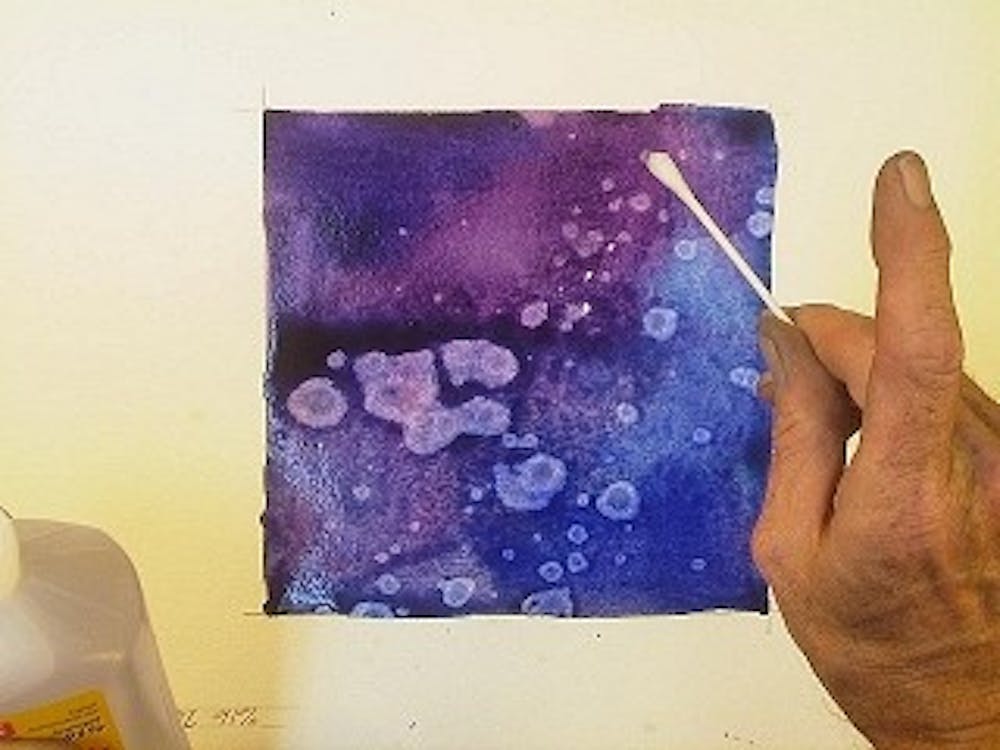I love to paint, especially with watercolors. Sometimes, though, I feel like I need to find a new technique to freshen up my designs and my technique. Online I’ve found all kinds of textual effects to give your artwork a new appeal. Here are some great ideas:
Alcohol: Putting drops of alcohol onto your already-damp work can create a cool drop or swirl effect. The alcohol drops here will manifest themselves in a white-ish color. If you use drops of alcohol on somewhat damp paint and then paint over it, you can also create a similar effect, but instead the drop will be colored.
Salt: Sprinkle salt onto either very wet, somewhat damp, or almost dry paint, and you will create a spreading effect. The more wet your paint is, the wider the spreading effect will appear. In the almost-dry sample of paint, the texture of the salt appears very fine in comparison to the somewhat wet sample of paint that looks like it has spread.
Plastic Wrap: If you are looking to texture landforms or water, a cool technique is to stretch plastic wrap across your somewhat-wet paint. Crumpled plastic wrap makes your paint look like it has an abstract design on it. Put your crumpled piece of plastic wrap on wet paint and leave it there until dry.
Wax Paper: This can provide a good texture effect for rocks. Tear shapes and lay it across damp paint. Make sure it dries fully before taking it off.
Blotting: Using a paper towel or facial tissue to blot your damp paint is great to take off some of your applied color. It creates an effect similar to that of using a sponge to blot.
Sandpaper: Using sandpaper creates a rough effect on your work. Be sure to use it on heavier types of watercolor paper, or you could end up ripping your paper!
I find that all of these effects add an extra depth to your painted works. If you are even slightly more than amateur (because that’s all I am) you can try and use these techniques in real works of art to add more depth to your rocks, mountains, trees, water, or other objects.
If you are interested in learning more techniques feel free to e-mail me at fbreisbl@asu.edu.





